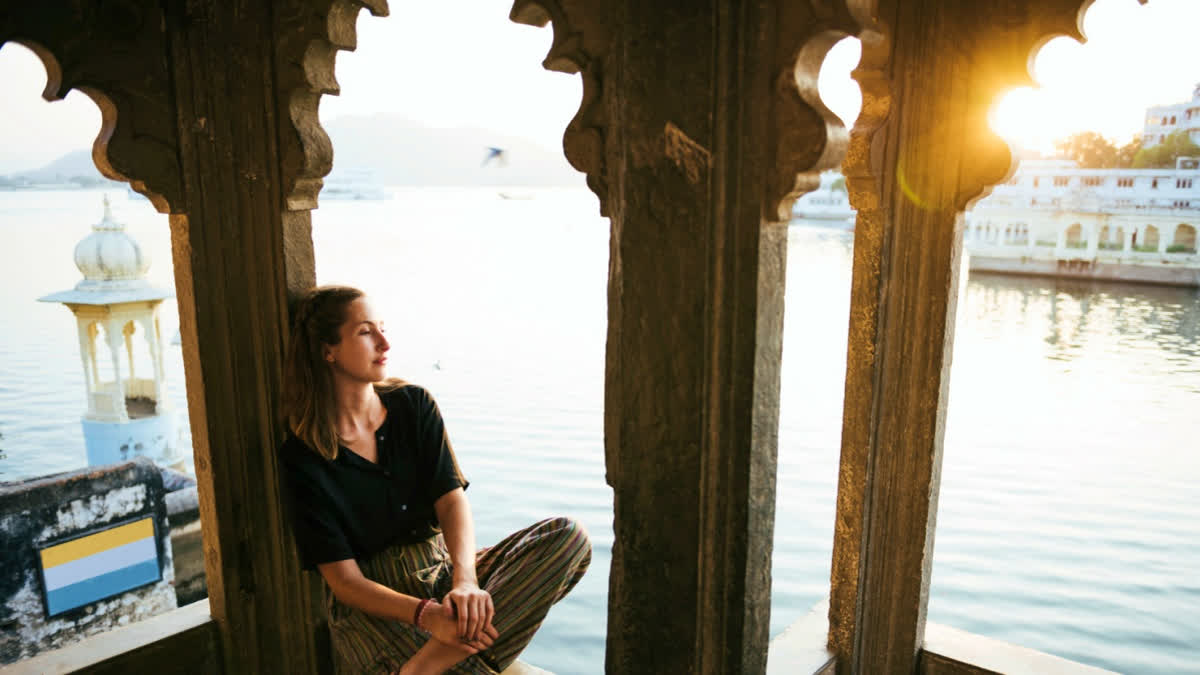World Heritage Week: Discover and Experience India’s Diversity Through Its Cultural Gems
World Heritage Week offers an invitation to pause, reflect and immerse oneself in the incredible diversity of our shared cultural heritage. With the 2024 theme of ‘Discover and Experience Diversity’, begin your journey within India itself. While the Taj Mahal and Red Fort often claim the spotlight, India’s lesser-known UNESCO World Heritage Sites are just as compelling, representing the spectrum of art, architecture, and spirituality across eras.
The week's roots trace back to the broader UNESCO-led movement following the 1972 World Heritage Convention, which established the framework for identifying and protecting sites of universal value. Over the years, the week (celebrated every November) has evolved into an opportunity for nations to celebrate their rare historical landmarks and traditions while placing emphasis the need for conservation.
A Spiritual Gateway
Nestled in the landscapes of Madhya Pradesh, the Buddhist Monuments at Sanchi stand as one of the most revered and ancient symbols of Buddhist art and architecture in India. Dating back to the 3rd century BCE, these monuments were commissioned by Emperor Ashoka. The site’s centrepiece is the Great Stupa, a massive hemispherical dome that enshrines sacred relics. Surrounding the stupa are intricately carved gateways or toranas, each narrating tales from the life of Buddha and Jataka stories with stunning craftsmanship.
Sanchi is not just an architectural marvel but also a timeless pilgrimage site, attracting visitors from around the globe who come to experience its historical significance and spiritual resonance.
Shorelines And Stonemasonry
Standing sentinel by the sea, the monuments of Mahabalipuram in Tamil Nadu are not just UNESCO world heritage sites, they are poems in stone. Dating back to the 7th and 8th centuries during the reign of the Pallava dynasty, these monuments showcase a remarkable diversity of styles, from intricately carved rock-cut temples and colossal open-air bas-reliefs to monolithic rathas (chariots) and the elegant Shore Temple overlooking the Bay of Bengal.
Each structure is a poetic narrative carved in stone, reflecting themes from Hindu mythology and the Pallava dynasty's spiritual devotion. The Descent of the Ganges (one of the largest bas-reliefs in the world) captures cosmic tales with unparalleled detail and dynamism. What sets Mahabalipuram apart is its seamless blend of artistry and the natural coastal landscape. As waves crash against the temple walls, one can almost hear the prayers of seafarers who once sought these shores.
Baroque Splendour In A Coastal Haven
Goa’s churches and convents embody the meeting of East and West. Here, Portuguese baroque architecture finds its home amidst coconut palms, merging faith and form. They represent a confluence of European Renaissance and Baroque architectural styles with Indian sensibilities. Rooted in the Portuguese colonial era, these churches were constructed between the 16th and 18th centuries, showcasing grand facades, intricate altars, and exquisite frescoes.
The Basilica of Bom Jesus houses the relics of St. Francis Xavier, and exemplifies Baroque artistry with its gilded altars and ornate woodwork. Meanwhile, the Se Cathedral (one of the largest churches in Asia) impresses with its Tuscan exterior and Corinthian interiors. The simple yet elegant Church of Our Lady of the Rosary reflects the early transition of Gothic design into Indian church architecture. Together, these monuments narrate a rich story of faith, artistry, and the cultural symbiosis between the East and West.
Royal Sepulchres
Tucked away in the lush valleys of Assam, the Moidams (mound-like burial sites) are a fascinating relic of the Ahom Dynasty, which ruled the region for nearly 600 years. These royal sepulchres found in the Charaideo district serve as both tombs and architectural marvels, blending Hindu and Tai Ahom cultural practices.
Each Moidam is an elaborate earthen and brick structure. The geometry of these mounds (often compared to the pyramids of Egypt) reflects advanced engineering and spiritual depth. Visiting Charaideo’s Moidams is like stepping into a time capsule, offering a glimpse into the rituals, power, and artistry of one of India’s most enigmatic dynasties.
Elephanta Caves, Maharashtra
A short ferry ride from Mumbai city brings you to the Elephanta Caves, which transports visitors into the spiritual and artistic heart of ancient India. Dating back to the 5th to 8th centuries CE, these rock-cut caves are dedicated to Lord Shiva and feature a series of intricate carvings and sculptures that depict various aspects of Shaivite mythology.
The centrepiece of the site is the magnificent three-headed sculpture of Trimurti Sadashiva. Nestled amidst lush greenery and overlooking the Arabian Sea, the caves also offer a serene escape from urban chaos. The interplay of art, devotion, and natural beauty at Elephanta makes it a must-visit destination for history enthusiasts and spiritual seekers.
A City Of Ephemeral Grandeur
Akbar’s ghost city Fatehpur Sikri is an architectural ode to India’s syncretic soul. Emperor Akbar’s short-lived capital exemplifies Mughal ingenuity in urban planning and architecture. The grand Buland Darwaza, the exquisite Panch Mahal, and the serene Jama Masjid reflect Mughal ingenuity and the emperor’s vision of a multicultural empire. Built in the 16th century, the city’s design integrates water management systems, including stepwells, canals and reservoirs to address the arid region’s water scarcity. The red sandstone structures, designed to maximise natural ventilation, remain cool even in extreme heat. Akbar’s integration of Hindu, Persian, and Islamic architectural elements showcases the scientific and cultural confluence that defined the Mughal era.
A Visionary’s Utopia
Rabindranath Tagore’s Santiniketan is a philosophy manifested in brick and mortar. A cradle of creativity and learning, its open-air classrooms and Baul music performances speak of an educational ethos rooted in harmony with nature. Its open courtyards, mud-brick walls, and tiled roofs mirror the rural ethos of Bengal while being climate-responsive. The design integrates outdoor learning spaces, gardens, and groves. The Visva-Bharati campus employs natural materials to regulate temperature and create serene, reflective spaces.
A Modernist Dream
Amidst India’s ancient wonders, Chandigarh’s modernist structures designed by Le Corbusier offer a striking contrast. Le Corbusier’s Chandigarh is a masterpiece of modernist urban planning, blending function with form. Designed in the 1950s, the city was envisioned as a living organism, with each sector functioning as an independent neighbourhood. The grid-like plan incorporated wide boulevards, green belts, and self-contained residential and commercial zones.
The Capitol Complex (featuring the High Court, Secretariat and Assembly) reflects an interplay of geometry, concrete, and light, using sunbreakers and exposed concrete to adapt to India’s climate. Corbusier’s architectural science made room for airflow, natural lighting, and efficient space utilisation.
The Moidams of Assam echo the unique burial traditions of the Ahom Dynasty. The Elephanta Caves celebrate the symbolism of Shaivism, carved into the heart of basalt rock. The monuments of Mahabalipuram embody the artistic zenith of Tamil Nadu, blending myth and stone. In contrast, the churches of Goa epitomise the harmony of East-West interactions, showcasing Portuguese Baroque merged with local craftsmanship. Together, these sites weave a vivid mosaic of India’s plurality, uniting Buddhist stupas, Hindu temples, Islamic mausoleums, and colonial churches. They show how India’s soul lies in its ability to embrace and celebrate its myriad cultural expressions.



